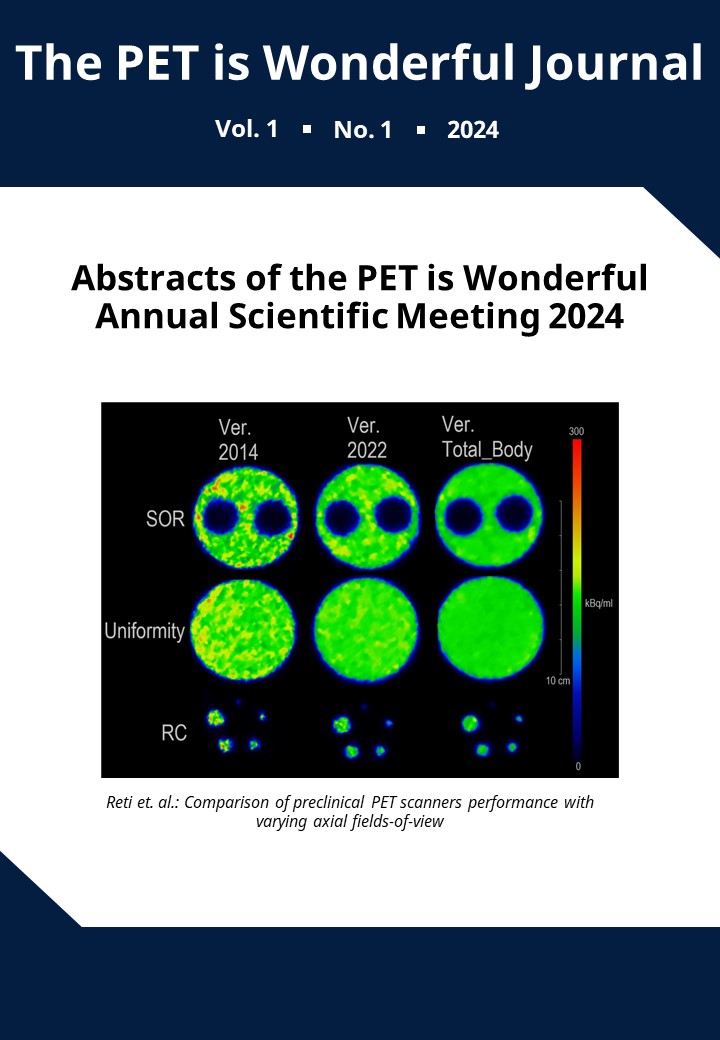Imaging Mutant Huntingtin Aggregates using [18F]CHDI-650 PET in a preclinical model of Huntington’s disease
DOI:
https://doi.org/10.2218/piwjournal.9823Abstract
Huntington’s disease (HD) is a fatal neurodegenerative disorder caused by a CAG repeat expansion in the huntingtin gene (HTT) that encodes pathogenic mutant huntingtin (mHTT) protein. Therapeutic strategies aimed at lowering mHTT would benefit from non-invasive PET-based methods to evaluate treatment response. The CHDI foundation developed the first-generation PET ligands labelled with 11C, which advanced to clinical evaluation. Further optimization generated an 18F radioligand with improved metabolic stability, brain exposure and specificity, shown by PET imaging in wild-type mice and autoradiography in HD brain samples1,2. Here, we characterised the PET radioligand [18F]CHDI-650 in the R6/1 mouse model of HD to assess its sensitivity for monitoring treatment response of mHTT lowering therapies.
[18F]CHDI-650 was produced according to an established method3 using a TRACERlab system. Radiochemical purity/molar activity of the final [18F]CHDI-650 product was detected by reverse-phase HPLC analysis. Dynamic PET imaging was conducted using R6/1 mice and wild-type littermates at various disease stages. Image processing and kinetic modelling (2TCM) analysis were performed using PMOD software. Ex vivo brain radioactivity was measured using gamma counting. Brains were cryo-sectioned and processed for immunofluorescence to identify HTT load.
[18F]CHDI-650 was produced (1.3 ± 0.2 GBq) with an average radiochemical purity of 99.9 ± 0.1 % and a molar activity of 32.4 ± 5.2 GBq/µmol (n = 9). The radioligand was able to discriminate R6/1 HET from WT mice at an early presymptomatic age for both dynamic PET imaging (striatal) and ex vivo whole brain gamma. A well-defined age associated increase was also evident using both measures. Dual immunofluorescence spatially defined the level of aggregated HTT in striatal and hippocampal regions across the age groups.
[18F]CHDI-650 PET shows great potential as a non-invasive tool for visualising the development of mHTT pathology and as a biomarker for preclinical efficacy studies.
Please click on the 'PDF' for the full abstract!
Downloads
Published
Issue
Section
License
Copyright (c) 2024 Michael Fairclough, Dhifaf Jasim, Tracy Hall, Rosemary Shoop, Herve Barjat, Tiffany Allen, Kerry Shea, Gayle Marshall, Juliana Maynard, Longbin Liu, Paul Sharp

This work is licensed under a Creative Commons Attribution 4.0 International License.





